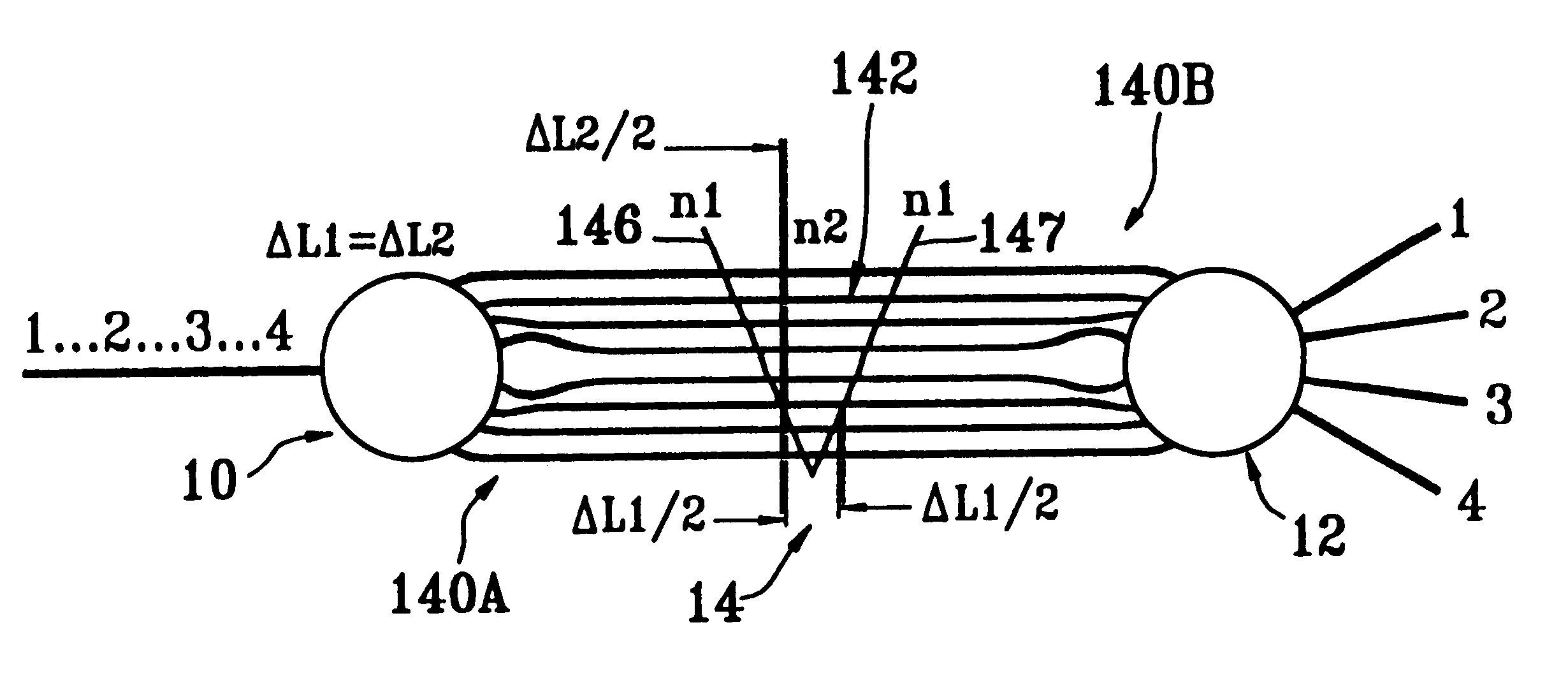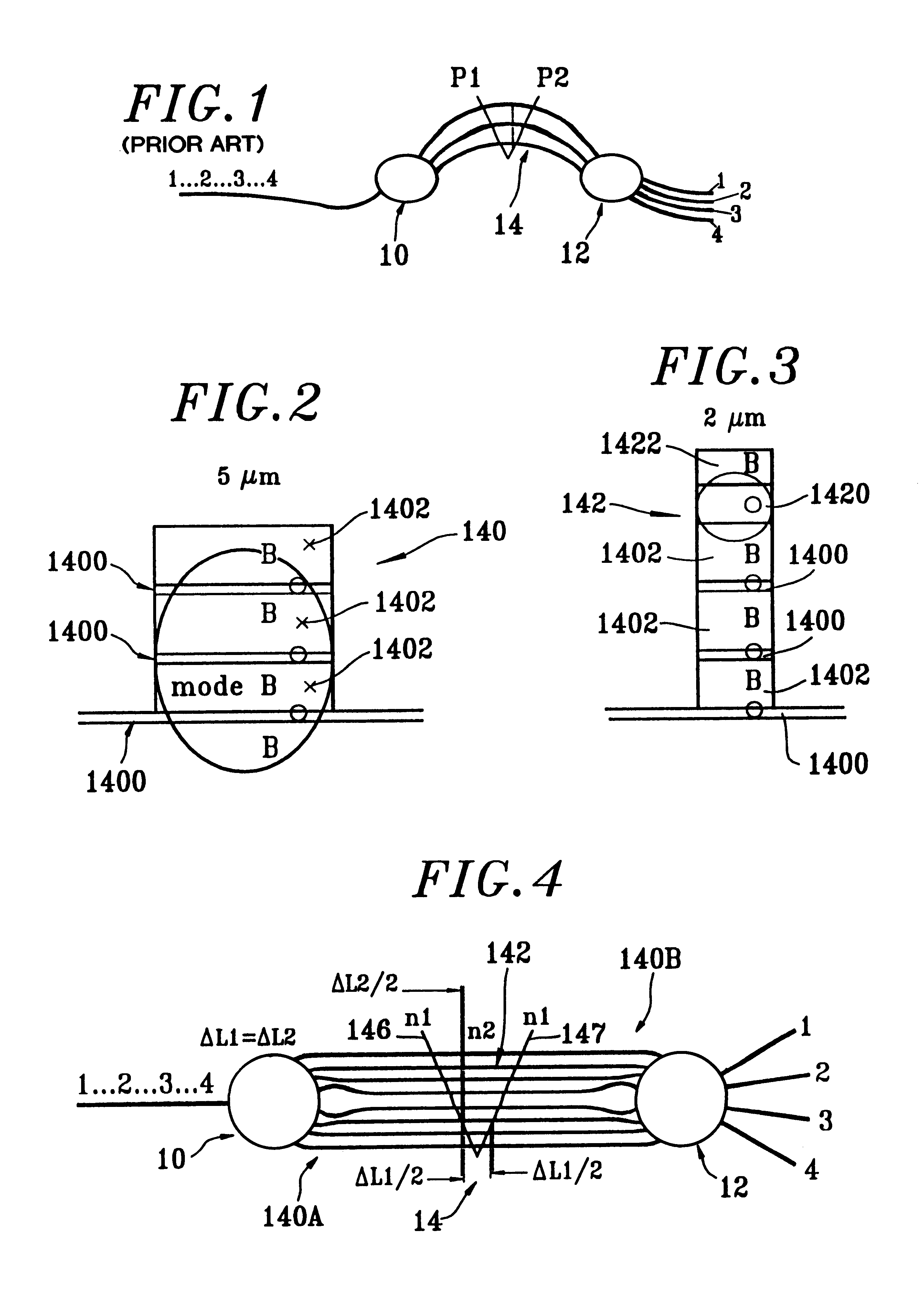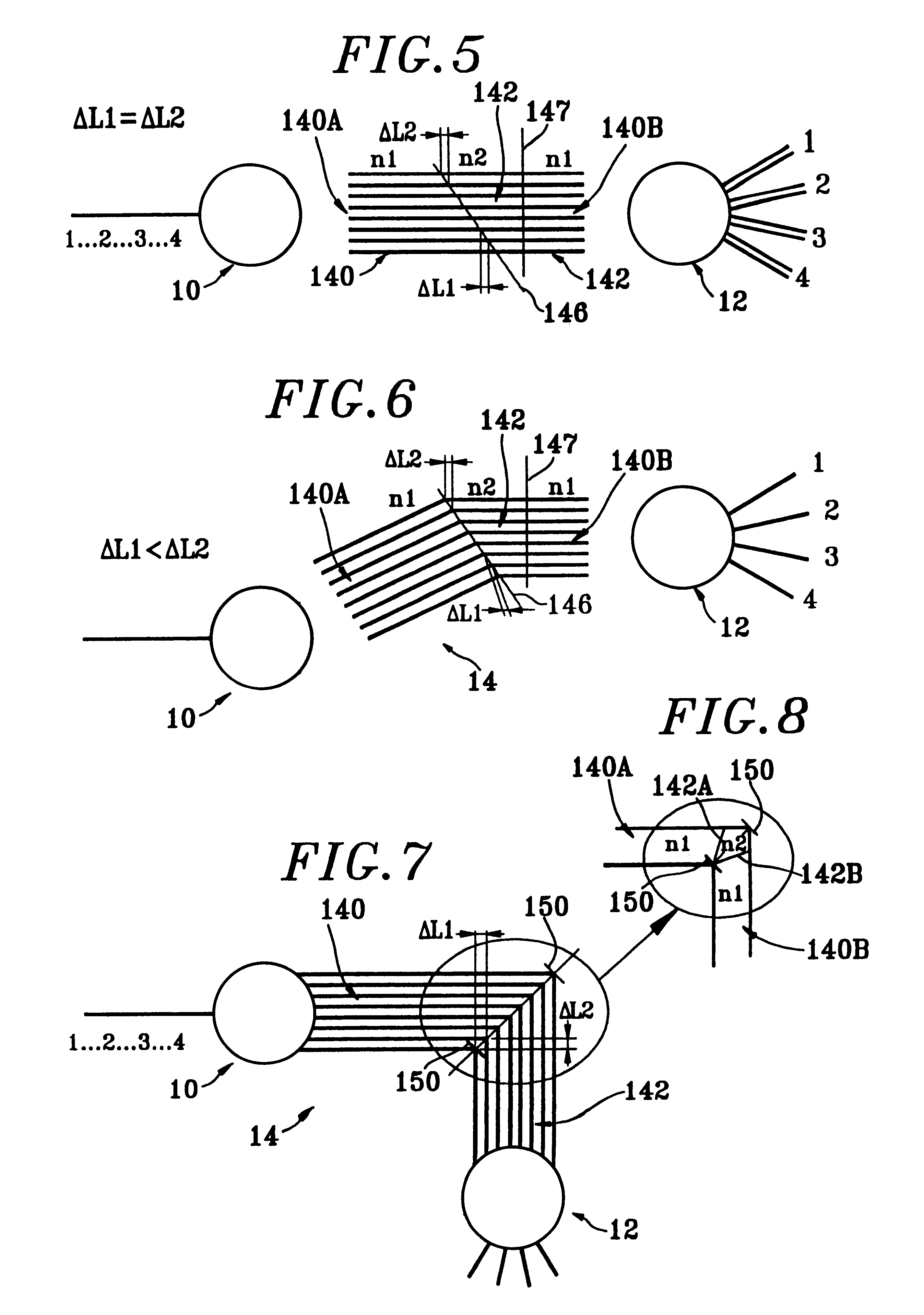Temperature-independent optical multiplexer and/or demultiplexer
- Summary
- Abstract
- Description
- Claims
- Application Information
AI Technical Summary
Benefits of technology
Problems solved by technology
Method used
Image
Examples
first embodiment
In the first embodiment, the refractive indices of the materials of both spans 140, 142 of each waveguide 14 vary with temperature in the same direction, but the two spans 140, 142 have respective lengths that vary in opposite directions from one waveguide to another.
FIGS. 4, 5, and 6 show three variants of such a device.
The equation giving the center wavelength .lambda. as a function of the difference between the path lengths of two consecutive guides in such a structure is as follows:
m.lambda.=n1.DELTA.1-n2.DELTA.L2 (1)
where .DELTA.L1>0 is the difference between the path lengths of two consecutive waveguides 14 for the material of refractive index n1 forming respective first spans 140; and
where .DELTA.L2>0 is the difference between the path lengths of two consecutive waveguides 14 for the material of refractive index n2 forming respective second spans 142.
The demultiplexer is designed such that .DELTA.L2=K.DELTA.L1
where k=(dn1 / dT) / (dn2 / dT)=K1 / K2>0, i.e. the refractive indices of t...
second embodiment
In the second embodiment, the refractive indices vary with temperature in opposite directions for the materials of the two spans 140, 142 of each waveguide 14, and the respective spans 140, 142 have lengths that vary in the same direction from one waveguide to another.
FIGS. 7, 8, and 9 show three variants of such a device.
The equation giving the center wavelength 1 as a function of the difference between the path lengths of two consecutive waveguides in such a structure is as follows:
m.lambda.=n1.DELTA.L1+n2.DELTA.L2 (2)
where .DELTA.L1>0 is the difference between the path lengths of two consecutive waveguides 14 for the material of refractive index n1 forming respective first spans 140; and
where .DELTA.L2>0 is the difference between the path lengths of two consecutive waveguides 14 for the material of refractive index n2 forming respective second spans 142.
The demultiplexer is designed such that .DELTA.L2=K.DELTA.L1
where k=-(dn1 / dT) / (dn2 / dT)>0, i.e. the refractive indices of the mat...
PUM
 Login to View More
Login to View More Abstract
Description
Claims
Application Information
 Login to View More
Login to View More - R&D
- Intellectual Property
- Life Sciences
- Materials
- Tech Scout
- Unparalleled Data Quality
- Higher Quality Content
- 60% Fewer Hallucinations
Browse by: Latest US Patents, China's latest patents, Technical Efficacy Thesaurus, Application Domain, Technology Topic, Popular Technical Reports.
© 2025 PatSnap. All rights reserved.Legal|Privacy policy|Modern Slavery Act Transparency Statement|Sitemap|About US| Contact US: help@patsnap.com



